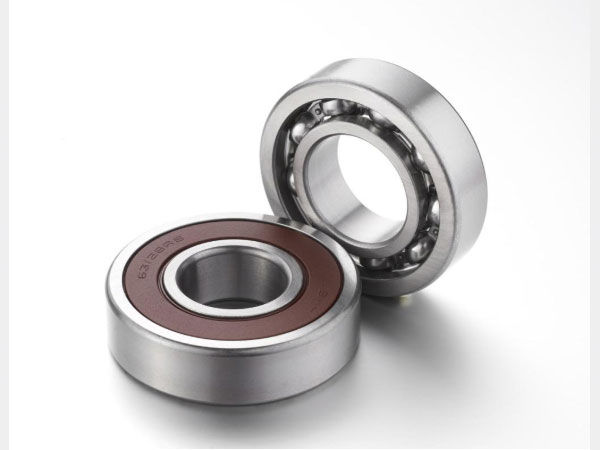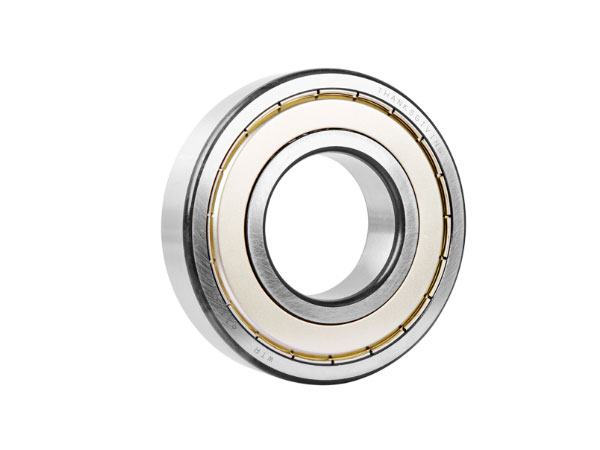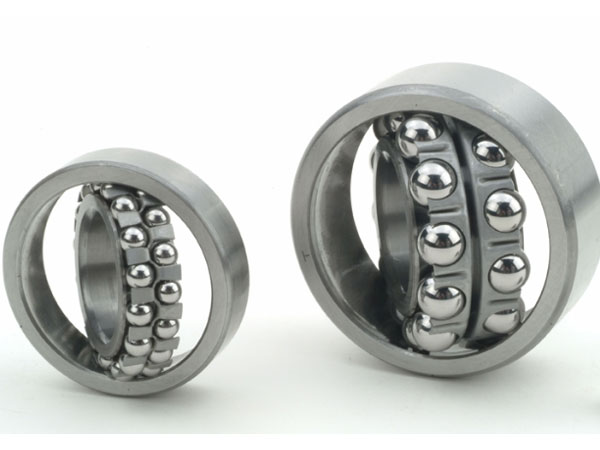The difference of bearing capacity of different types of bearings.(slewing ring bearing)
Deep groove ball bearings are the most common type of rolling bearings. The basic deep groove ball bearing consists of an outer ring, an inner ring, a set of steel balls and a set of cages. The deep groove ball bearing types are single row and double row. The deep groove ball structure is also divided into two types: sealed and open. The open type refers to the bearing without sealing structure. The sealed deep groove ball is divided into dustproof seal and oil proof. seal. The dust seal cover material is stamped from steel plate, which is simple to prevent dust from entering the bearing raceway. The oil-proof type is a contact type oil seal, which can effectively prevent the grease inside the bearing from overflowing.

Deep groove ball bearings are mainly subjected to radial loads and can also withstand radial loads and axial loads. When it is only subjected to radial loads, the contact angle is zero. When the deep groove ball bearing has a large radial clearance, it has the performance of an angular contact bearing and can withstand a large axial load. The deep groove ball bearing has a small friction coefficient and a high limit speed.
The deep groove ball bearing has a simple structure and is easy to achieve high manufacturing precision compared with other types, so it is easy to be mass-produced in series, and the manufacturing cost is also low, and the use is extremely common. In addition to the basic type, deep groove ball bearings also have various modified structures, such as: deep groove ball bearings with dust cover, deep groove ball bearings with rubber seals, deep groove ball bearings with snap grooves, and Deep groove ball bearings with large load capacity of ball notches, double row deep groove ball bearings.
Deep groove ball bearings generally use steel stamped cages or brass solid cages. When the outer diameter is less than 400 mm, the steel stamping cage is not added with a post code. When the outer diameter is larger than 400 mm, the brass solid cage is not used with a post code.

1.Self-aligning ball bearing
The self-aligning ball bearing is a bearing equipped with a spherical ball between the inner ring of the two raceways and the outer ring of the spherical raceway.
The center of curvature of the outer raceway surface is identical to the center of the bearing, so it has the same self-aligning function as the self-aligning ball bearing. When the shaft and outer casing are deflected, they can be adjusted automatically without increasing the bearing load.
Spherical roller bearings can withstand radial loads and axial loads in both directions. The radial load capacity is large, and it is suitable for heavy load and impact load. The inner ring inner diameter is a tapered bore bearing that can be mounted directly. Or use the adapter sleeve and the removal cylinder to mount on the cylindrical shaft. The cage uses a steel stamping cage, a polyamide forming cage and a copper alloy cage.
The self-aligning ball bearing has two structures of a cylindrical hole and a tapered hole, and the material of the cage is steel plate, synthetic resin and the like. The characteristic is that the outer ring raceway has a spherical shape and has self-aligning property, which can compensate the error of the heart ball bearing by different degrees of heart and shaft deflection, but the relative inclination of the inner and outer rings must not exceed 3 degrees.
Can withstand large radial loads while also withstanding a certain axial load. The outer ring raceway of this type of bearing is spherical, so it has the function of self-aligning. When the shaft is bent or tilted so that the center line of the inner ring and the center line of the outer ring are inclined no more than 1°~2.5°, the bearing can still work.
The inner diameter of the self-aligning ball bearing is cylindrical or conical. The conical inner bore has a taper of 1:1 2 or 1:30. In order to enhance the lubrication performance of the bearing, an annular oil groove and three oil holes are machined on the outer ring of the bearing.
It is mainly subjected to radial loads and can withstand small axial loads. The axial displacement of the shaft (housing) is limited to the clearance limit, and has automatic self-aligning performance, allowing normal operation under the condition that the inner and outer sides are relatively inclined, and is suitable for the parts in which the support seat hole cannot strictly guarantee the coaxiality.

The self-aligning ball bearing with dust cover and sealing ring has been filled with the proper amount of grease. It should not be heated or cleaned before installation. It does not need to be relubricated during use. It can adapt to operating temperature – 30 °C to + 120 °C. between. Main purpose of self-aligning ball bearings: Suitable for precision instruments, low noise motors, automobiles, motorcycles and general machinery, etc. It is the most widely used type of bearing in the machinery industry.
2. Cylindrical roller bearing
Cylindrical rollers and raceways are line contact bearings. Load capacity, mainly bear radial load. The rolling element has little friction with the ferrule rib and is suitable for high speed rotation. According to the ferrule with or without ribs, it can be divided into single row cylindrical roller bearings such as NU, NJ, NUP, N, NF, and double row cylindrical roller bearings such as NNU and NN. The bearing is a structure in which the inner ring and the outer ring are separable.
Cylindrical roller bearings with no ribs on the inner or outer ring, the inner and outer rings can move relative to the axial direction, so they can be used as free end bearings. A cylindrical roller bearing with a single rib on one side of the inner and outer rings and a single rib on the other side can withstand a certain degree of axial load in one direction. Steel stamping cages or copper alloy solid cages are generally used. However, some use polyamide shaped cages.
The cylindrical roller is in line contact with the raceway and has a large radial load capacity. Suitable for both heavy and shock loads, as well as for high speed rotation.
Cylindrical roller bearing raceways and rolling elements are geometric. After the improved design, the new load-bearing capacity, the new structural design of the rib and the roller end face not only improve the axial bearing capacity of the bearing, but also improve the lubrication conditions of the contact area between the roller end face and the rib, and improve the lubrication condition. Bearing performance.
The cylindrical roller is in line contact with the raceway and has a large radial load capacity. Suitable for both heavy and shock loads, as well as for high speed rotation.
Cylindrical roller bearing raceways and rolling elements are geometric. After the improved design, the new load-bearing capacity, the new structural design of the rib and the roller end face not only improve the axial bearing capacity of the bearing, but also improve the lubrication conditions of the contact area between the roller end face and the rib, and improve the lubrication condition. Bearing performance.
3.Single row angular contact ball bearings
Single row angular contact ball bearings can only withstand axial loads in one direction and will cause additional axial forces when subjected to radial loads. And can only limit the axial displacement of the shaft or housing in one direction. Angular contact ball bearings have a contact angle of 40 degrees and can withstand large axial loads. Angular contact ball bearings are non-separable designs with different shoulder heights on the sides of the inner and outer rings. In order to increase the bearing capacity of the bearing, the shoulder on one side is machined lower, so that the bearing can be loaded with more steel balls.
Double row angular contact ball bearings can withstand large radial loads and mainly combine radial and axial load and moment loads, limiting axial displacement of both sides of the shaft. Mainly used to limit the axial displacement of the shaft and the shell. The tiltability between the inner and outer rings of the double row angular contact ball bearing is limited. The allowable tilt angle depends on the internal clearance of the bearing, the bearing size, the internal design and the action.
The force and moment on the bearing, and the maximum allowable tilt angle should ensure that there is no excessive additional stress in the bearing. If there is a tilt angle between the inner and outer rings of the bearing, it will affect the life of the bearing, and at the same time, the bearing running accuracy will decrease and the running noise will increase. Double row angular contact ball bearings typically use a nylon cage or a brass solid cage.



